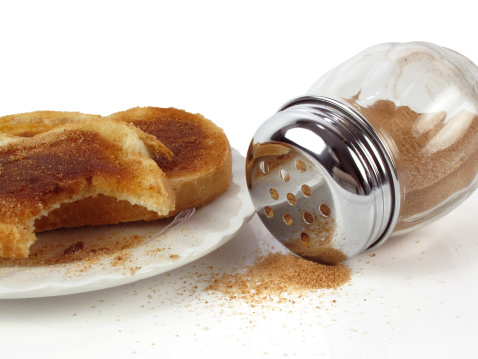Compounds from cinnamon may delay Alzheimer’s

Cinnamon. It’s been referenced as a holy anointing oil in the Bible, was used by Egyptians medicinally and now, according to a new study to be released in an upcoming issue of the Journal of Alzheimer’s Disease, it may hold the key to delaying the onset of—or even ward off—the effects of Alzheimer’s disease.
Scientists at UC Santa Barbara in California have discovered that two compounds found in cinnamon—cinnamaledehyde and epicatechin—show promise in the effort to fight Alzheimer’s. The compounds have been shown to prevent the development of the string-like “tangles” found in the brain cells that characterize Alzheimer’s.
These tangles or knots are made up of a protein called tau that plays a large role in the structure of neurons and their function, and are responsible for the assembly of microtubules in a cell.
Roshni George, a grad student researcher, explains, “The problem with tau in Alzheimer’s is that it starts aggregating.” When the protein does not bind properly to the microtubules that form the cell’s structure, it has a tendency to clump together, forming insoluble fibers in the neuron (the nerve cell of the nervous system), said George in a statement.
The older we get, the more susceptible we are to these twists and tangles. And Alzheimer’s patients develop them more often and in larger amounts.
Researchers’ use of cinnamaldehyde, the compound responsible for the bright, sweet smell of cinnamon, has proven effective in preventing the tau knots. By protecting tau from oxidative stress (the damage to cells by free radicals and other environmental stressors in part due to decreased antioxidants), the compound, an oil, could stop the protein from forming the tangles.
“Take, for example, sunburn, a form of oxidative damage. If you wore a hat, you could protect your face and head from the oxidation,” explained Donald Graves, adjunct professor in UCSB’s Department of Molecular, Cellular and Developmental Biology. “In a sense, this cinnamaldehyde is like a cap.” While it can protect the tau protein by binding to its vulnerable cysteine residues, it can also come off, which can ensure the proper functioning of the protein, added Graves.
The other compound found in cinnamon, epicatechin, also in other food such as blueberries, chocolate and red wine, has proven to be a powerful antioxidant. Researchers found that it not only quenches the burn of oxidation, but it gets activated by oxidation so it interacts with the cysteines (amino acids) on the tau protein in a way that’s mimics the protective action of cinnamaldehyde.
Although this research shows promise, Graves said they are “still a long way from knowing whether this will work in human beings.” The researchers caution against ingesting more than the typical amounts of cinnamon already used in cooking.
If cinnamon and its compounds do live up to their promise, it could be a significant step in the ongoing battle against Alzheimer’s disease. With the U.S. population living longer and the Baby Boom generation getting older, Alzheimer’s presents a considerable problem and threatens to overwhelm the U.S. healthcare system. According to the Alzheimer’s Association, in 2013, Alzheimer’s will cost the nation $203 billion.
“Wouldn’t it be interesting if a small molecule from a spice could help?” commented Graves, “perhaps prevent it, or slow down the progression.”
Related Posts
Comments
About the Author
health enews staff is a group of experienced writers from our Advocate Health Care and Aurora Health Care sites, which also includes freelance or intern writers.

















